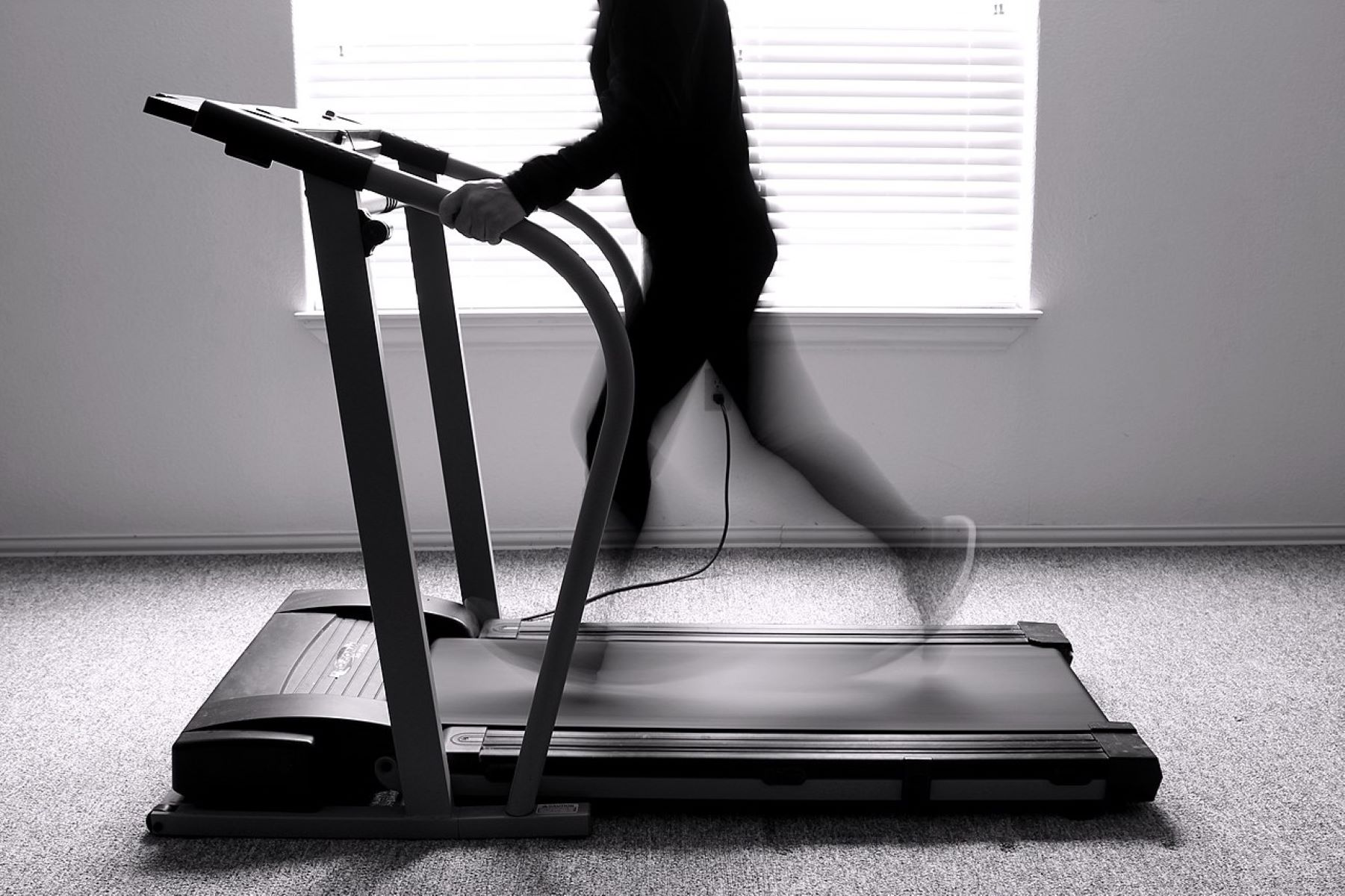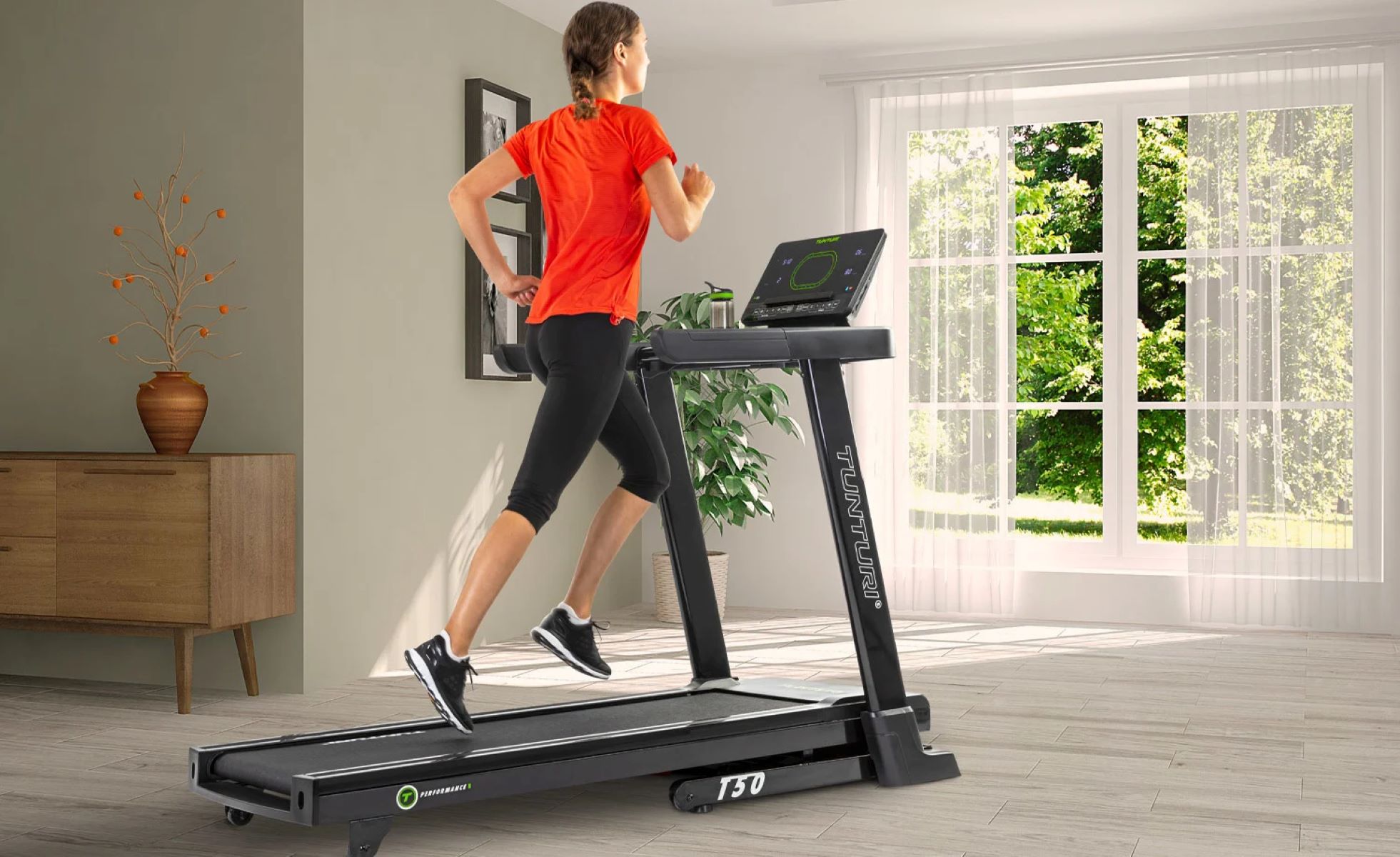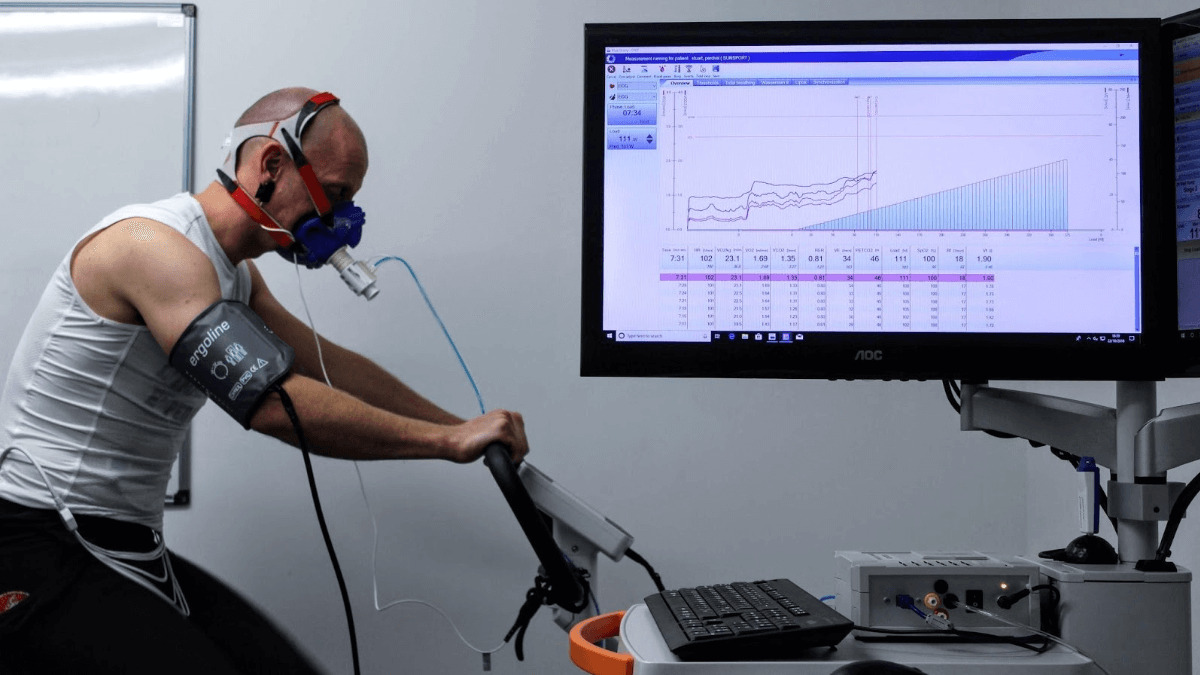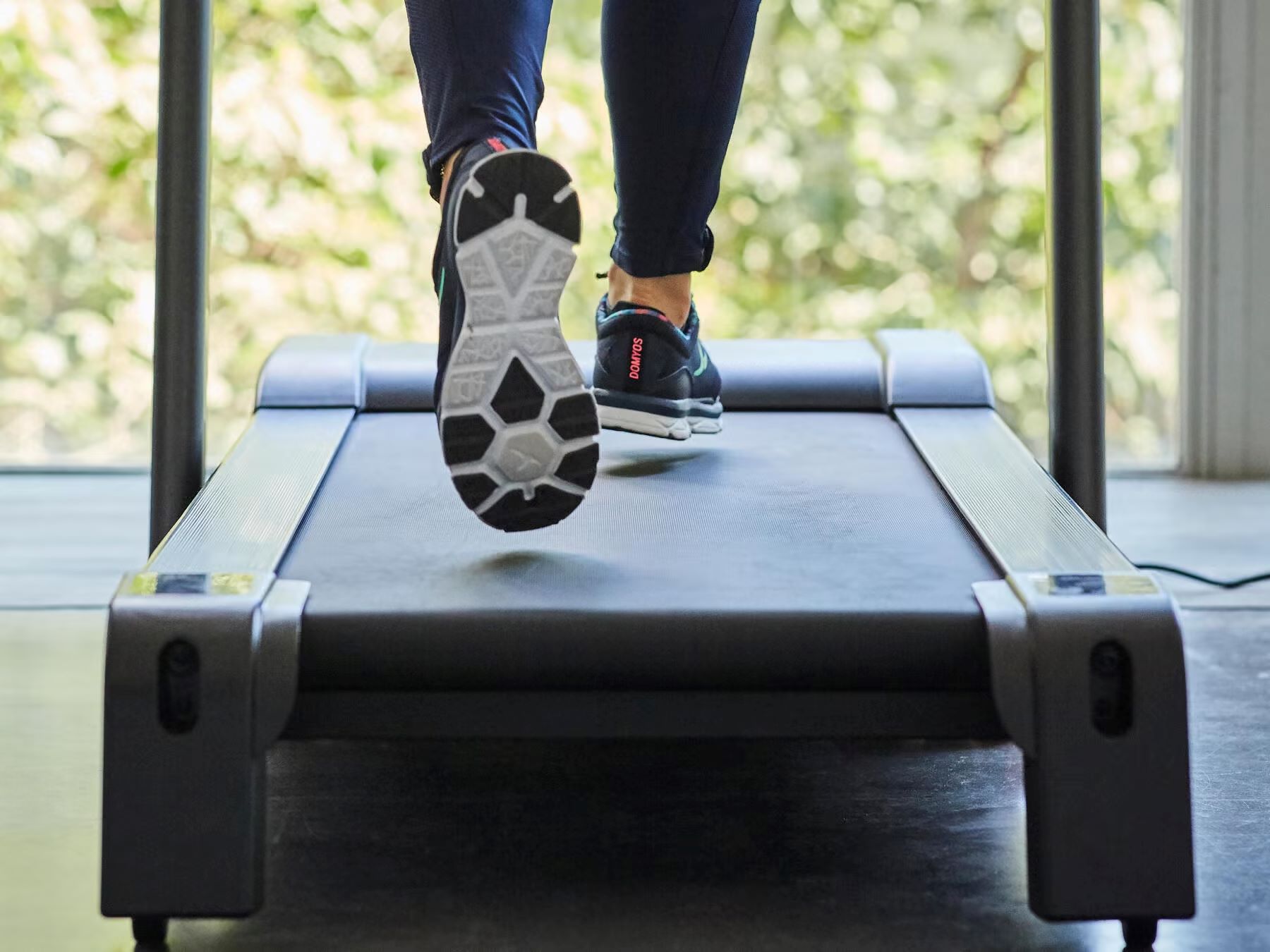Home>Misc>Featured>How Long Does It Take To Walk 4 Miles On A Treadmill
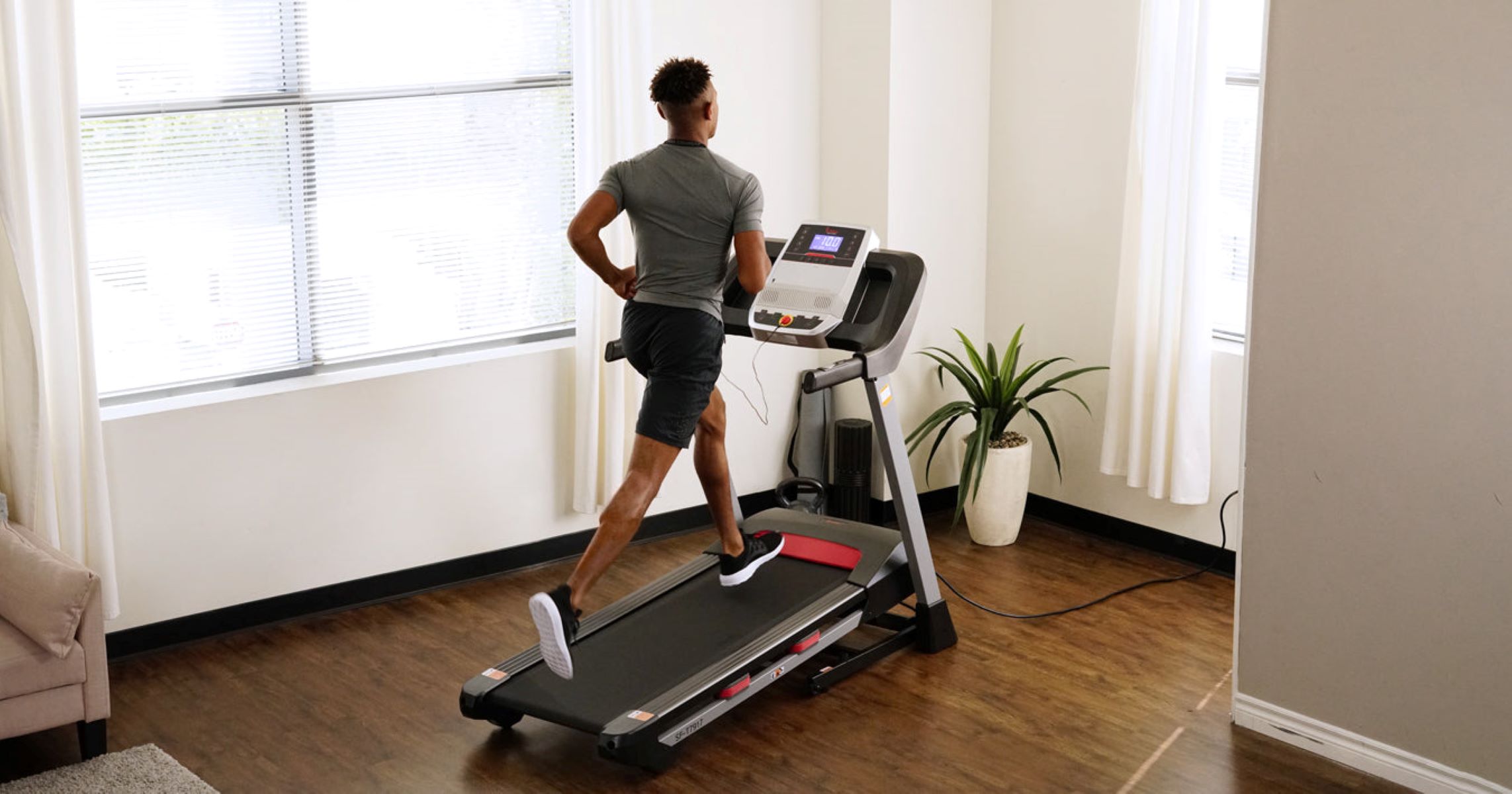

Featured
How Long Does It Take To Walk 4 Miles On A Treadmill
Modified: August 21, 2023
Discover how long it takes to walk 4 miles on a treadmill in this featured article. Get insights on treadmill walking pace and duration for a healthier lifestyle.
Introduction
Walking on a treadmill is a popular form of exercise that can be done in the comfort of your own home or at the gym. It offers a convenient and efficient way to get your daily steps in, burn calories, and improve cardiovascular fitness. One common question for treadmill users is: How long does it take to walk a certain distance, like 4 miles?
The time it takes to walk 4 miles on a treadmill can vary depending on several factors, such as your walking speed, fitness level, and terrain settings on the treadmill. In this article, we will explore the factors that affect walking speed on a treadmill, provide an average walking speed, and explain how to calculate the time it takes to walk 4 miles. We will also offer tips on how to increase your walking speed and make the most out of your treadmill workouts.
Whether you are looking to set a personal record or just curious about your walking pace, understanding the time it takes to walk 4 miles on a treadmill can help you plan your workouts and track your progress. So, let’s dive in and discover the factors that influence walking speed on a treadmill and how you can optimize your time spent walking for maximum benefits!
Factors Affecting Walking Speed on a Treadmill
Several factors can influence your walking speed on a treadmill. Understanding these factors will help you better manage your pace and achieve your desired walking goals. Let’s take a closer look at the key factors that can affect your walking speed on a treadmill:
- Fitness Level: Your overall fitness level plays a significant role in determining your walking speed. Individuals who are more physically fit tend to walk at a faster pace compared to those who have a lower fitness level. Regular exercise, including walking or other cardiovascular activities, can help improve your fitness level and increase your walking speed over time.
- Incline: The incline setting on the treadmill can impact your walking speed. Walking on an incline requires more effort and can slow down your pace. Conversely, walking on a flat surface or at a slight incline can allow you to walk at a faster speed. Adjusting the incline on the treadmill can help you simulate different terrains and increase the intensity of your workout.
- Stride Length: The length of your stride also affects your walking speed. Individuals with longer strides can cover more distance with each step, allowing them to walk faster. However, it’s important to note that forcing a longer stride can result in improper gait and increase the risk of injury. It’s best to maintain a natural and comfortable stride length that suits your body’s mechanics.
- Age and Health Conditions: Age and any underlying health conditions can impact walking speed. Older individuals or those with certain health conditions may have a slower walking speed due to factors such as decreased muscle strength, joint stiffness, or cardiovascular limitations. It’s important to consult with a healthcare professional before starting a new exercise routine and make any necessary modifications based on your specific needs.
- Treadmill Features: The features and settings of the treadmill itself can affect your walking speed. Treadmills with advanced technology offer features such as adjustable speed increments, preset programs, and speed control buttons that make it easier to adjust your pace. Familiarizing yourself with the functions and capabilities of your treadmill will allow you to make precise adjustments to your speed and optimize your walking performance.
By considering these factors and making necessary adjustments, you can effectively manage your walking speed on a treadmill and work towards achieving your fitness goals. Keep in mind that everyone’s walking speed is unique, and it’s important to listen to your body and find a pace that is comfortable and sustainable for you.
Average Walking Speed on a Treadmill
The average walking speed on a treadmill can vary depending on individual factors and fitness levels. However, as a general guideline, a moderate walking speed on a treadmill is typically around 3 to 4 miles per hour (4.8 to 6.4 kilometers per hour). Walking at this pace allows for a comfortable workout that elevates heart rate and provides cardiovascular benefits.
It’s important to note that the average walking speed can vary for different individuals. Factors such as age, fitness level, and personal goals can all influence the desired walking speed. Some individuals may prefer a slower pace for leisurely walking or recovery purposes, while others may aim for a faster speed to challenge themselves and improve their endurance.
Additionally, it’s worth mentioning that professional walkers or athletes who train specifically for speed walking events may have much faster walking speeds, sometimes reaching up to 6 to 8 miles per hour (9.7 to 12.9 kilometers per hour) or even more. However, it’s important to train for such speeds gradually and under expert supervision to avoid injury and maximize performance.
Ultimately, the average walking speed on a treadmill is subjective and can be adjusted based on individual preferences and goals. The key is to find a pace that is challenging but sustainable for you, allowing you to enjoy the benefits of walking without overexertion.
Remember, it’s always a good idea to consult with a healthcare professional or a fitness trainer to determine an appropriate walking speed based on your individual circumstances. They can help you set realistic goals and provide guidance on how to safely and effectively increase your walking speed over time.
Calculating Time to Walk 4 Miles on a Treadmill
Calculating the time it takes to walk 4 miles on a treadmill is a simple process that involves considering your walking speed and making a few calculations. Here’s a step-by-step guide on how to calculate the time:
- Determine your walking speed: Start by knowing your average walking speed on a treadmill. If you’re unsure of your speed, you can use a stopwatch or the built-in speed display on the treadmill to measure how long it takes you to walk a certain distance. Alternatively, you can estimate your speed based on your perceived effort and comfort level during a typical workout.
- Convert your walking speed to miles per hour: Most treadmills display speed in miles per hour, so if you measured your speed in a different unit, you need to convert it. For example, if your speed is 3.5 kilometers per hour, you can convert it to miles per hour by dividing it by 1.60934. In this case, 3.5 kilometers per hour is approximately 2.17 miles per hour.
- Calculate the time to walk 4 miles: Now that you have your walking speed in miles per hour, you can calculate the time it takes to walk 4 miles. Divide the distance (4 miles) by your walking speed (in miles per hour). For example, if your walking speed is 2.5 miles per hour, it would take you approximately 1 hour and 36 minutes to walk 4 miles (4 divided by 2.5 equals 1.6).
Keep in mind that this is a basic calculation and doesn’t account for factors such as rest breaks or changes in walking speed during your workout. It’s also worth noting that your speed and endurance may improve over time with consistent training, allowing you to cover the same distance in a shorter duration.
Lastly, it’s important to listen to your body and adjust your walking speed accordingly. If you find that you need to slow down or take breaks during your walk, it’s perfectly fine. The goal is to maintain a pace that is comfortable and sustainable for you.
By calculating the time it takes to walk 4 miles on a treadmill, you can set goals, track your progress, and incorporate variety into your workouts. Remember, it’s all about finding a pace that works for you and allows you to enjoy the numerous health benefits of walking.
Tips for Increasing Walking Speed on a Treadmill
If you’re looking to increase your walking speed on a treadmill, there are several strategies you can incorporate into your workouts. By gradually increasing your pace and focusing on specific training techniques, you can improve your speed and maximize the benefits of your treadmill walking routine. Here are some tips to help you increase your walking speed:
- Incorporate interval training: Interval training involves alternating between periods of high-intensity exercise and periods of lower intensity or rest. Incorporating intervals into your treadmill walks can help improve your cardiovascular fitness and increase your walking speed. Start by adding short bursts of faster walking or jogging into your regular walking routine, gradually increasing the duration and intensity of the intervals over time.
- Focus on proper form: Pay attention to your walking form to optimize your speed and efficiency. Keep your head up, shoulders relaxed, and engage your core. Swing your arms naturally and avoid unnecessary movements that can slow you down. Maintaining good posture and alignment can help you maintain a faster walking pace with less effort.
- Gradually increase your speed: Push yourself to increase your walking speed gradually. Aim to increase your pace by small increments each week. Start with a pace that feels challenging but sustainable, and gradually increase your speed as your fitness level improves. Remember to listen to your body and avoid pushing yourself too hard too soon, as this can lead to fatigue or injury.
- Increase the treadmill incline: Walking on an incline can simulate outdoor walking conditions and help increase your walking speed. Gradually increase the incline on the treadmill to challenge your muscles and improve your speed. Walking uphill engages different muscle groups and can help build leg strength, making it easier to maintain a faster pace on level ground.
- Include strength training exercises: Incorporating strength training exercises into your fitness routine can improve your overall muscle strength and power, which can directly impact your walking speed. Focus on exercises that target your lower body, such as lunges, squats, and calf raises. Strengthening your leg muscles can improve your stride length and enable you to generate more force with each step.
Remember to start with a dynamic warm-up and finish with a cool-down and stretches to prepare and recover your muscles properly.
By implementing these tips and techniques, you can gradually increase your walking speed on a treadmill and challenge yourself to reach new goals. It’s important to be patient with yourself and celebrate your progress along the way. Stay consistent with your training and listen to your body to avoid overexertion and injury. With determination and practice, you’ll be amazed at how much your walking speed can improve!
Conclusion
Walking on a treadmill is a fantastic way to incorporate physical activity and movement into your daily routine. Whether you’re walking for leisure, fitness, or weight loss, understanding the factors that affect your walking speed and knowing how to calculate the time it takes to cover a specific distance can help you set goals and track your progress.
Factors such as fitness level, incline, stride length, age, and health conditions can influence your walking speed on a treadmill. By taking these factors into consideration and making necessary adjustments, you can find a pace that is comfortable and suits your individual needs.
The average walking speed on a treadmill is typically around 3 to 4 miles per hour, but this can vary based on personal preferences and goals. It’s important to listen to your body, gradually increase your pace, and make adjustments as needed.
Calculating the time it takes to walk a specific distance, like 4 miles, on a treadmill is a simple process that involves knowing your walking speed and making a basic calculation. However, it’s important to remember that this calculation may not account for rest breaks or changes in speed.
If you’re looking to increase your walking speed, incorporating interval training, focusing on proper form, gradually increasing your pace, using incline settings, and adding strength training exercises to your routine can be beneficial. Remember to start slowly, be patient with yourself, and celebrate your progress along the way.
Walking on a treadmill offers numerous health benefits, such as improving cardiovascular fitness, burning calories, and increasing endurance. Whether you’re a beginner or an experienced walker, the treadmill can be a valuable tool for achieving your fitness goals.
So, lace up your walking shoes, hop on that treadmill, and start enjoying the many benefits of walking at your desired speed. With consistency and dedication, you can increase your walking speed, challenge yourself, and reach new heights in your fitness journey!
